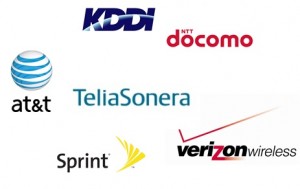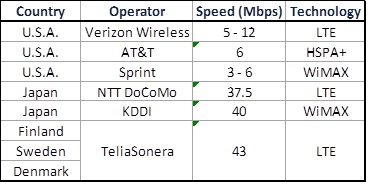Nowadays many carriers in mobile industry are claiming to have 4G networks, nevertheless we should be skeptic about those affirmations and ask if that is true?, if they are ‘real’ 4G or is just a marketing trick to make us buy more expensive services and devices.
 In our experience and intuitively we expect from 4G networks higher speed rates and newer and nicer mobile devices to work with it, but to have a better idea of what are we talking about let’s take a look to the actual 4G definition in order to answer the question we are proposing.
In our experience and intuitively we expect from 4G networks higher speed rates and newer and nicer mobile devices to work with it, but to have a better idea of what are we talking about let’s take a look to the actual 4G definition in order to answer the question we are proposing.
The Radio communication Sector of the International Communication Union (ITU-R) is the organization in charge of the technologies regulation for mobile industry, this organization is in fact the only one authorized to decide which are the standards and specifications to be accepted worldwide. According to them, in a very simplistic way, a 4G network is the one which is able to deliver speed peaks of 100Mbps for high mobility terminals (users in trains or cars) and 1Gbps for low mobility terminals (stationary users).
Now taking into account that definition in the following table (Information gathered from operators websites) we can see the speed rates that are being offered by some mobile operators around the world :
We can observe here that some operators are already offering very high speed connections, but speaking in strict sense none of them has been able so far to reach the established peak of 100Mbps, which basically means that, unfortunately, we haven’t reach yet the 4th generation of mobile networks.
There is other important consideration that we shouldn’t forget; ITU-R has established very detailed guidelines, specifications and technologies to be used by the operators to be considered as 4G Networks. For example they have stated that the recommended technologies are LTE-Advanced and WirelessMAN-Advanced. Observing this idea, we for sure can say that Verizon Wireless, DoCoMo and TeliaSonera are much closer to the 4G than the others because they already have LTE operating in their networks, so they will just need to upgrade to LTE-Advanced to be equipped accordingly.
Many other mobile operators in the world (in UK, France, Spain, Italy, etc…) are in the auction process to acquire the 4G spectrum or are still upgrading their networks, this means for many of us that it will take some years before we see download rates of 100Mpbs in our phones.
But, not everything is lost, according to a press release from February of the current year DoCoMo is performing trials for LTE-Advanced, and they affirm that they have been able to deliver 1Gpbs for the downlink.
It is still unclear when we will have 4G networks running up to standard in most of the big cities but we will certainly be moving in that direction in the near future.